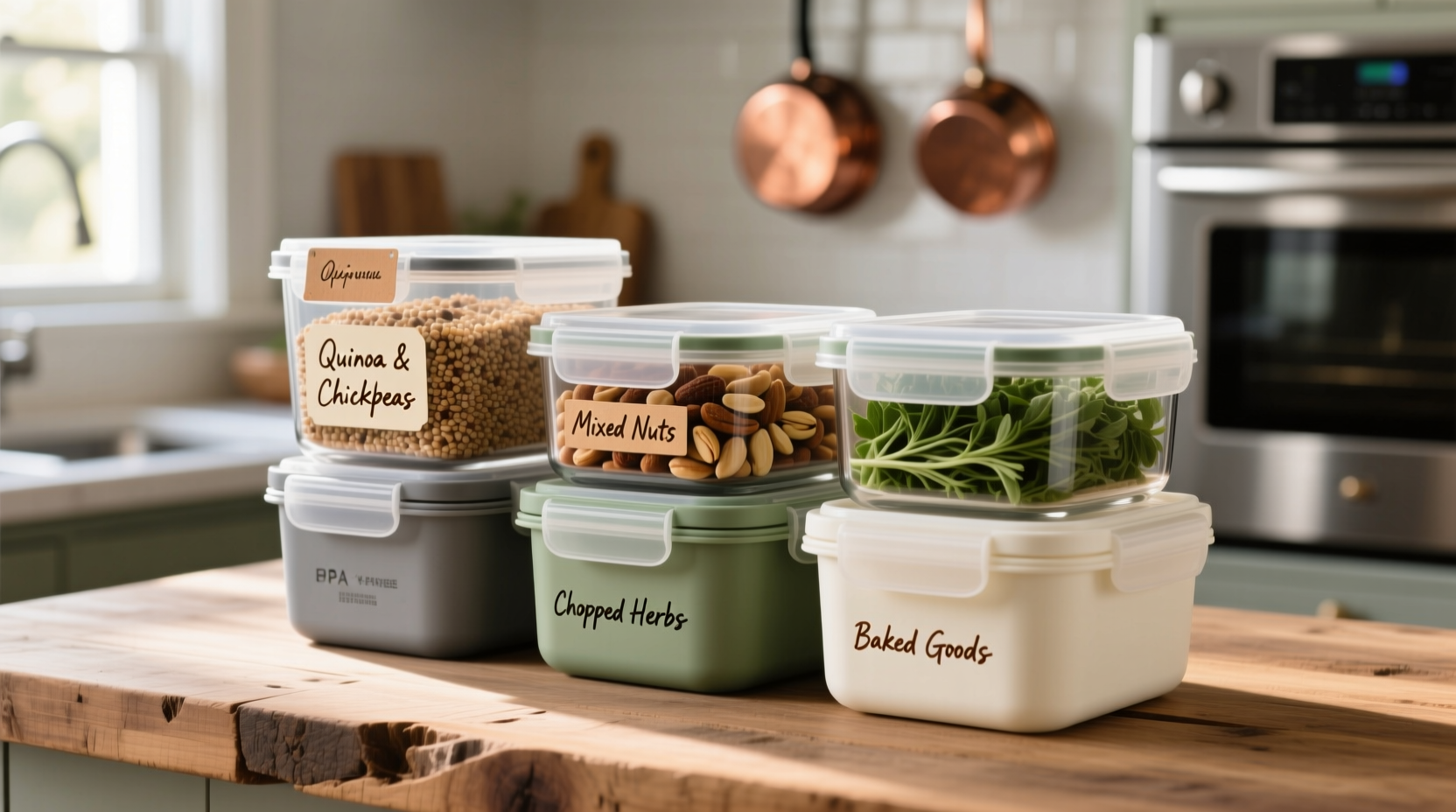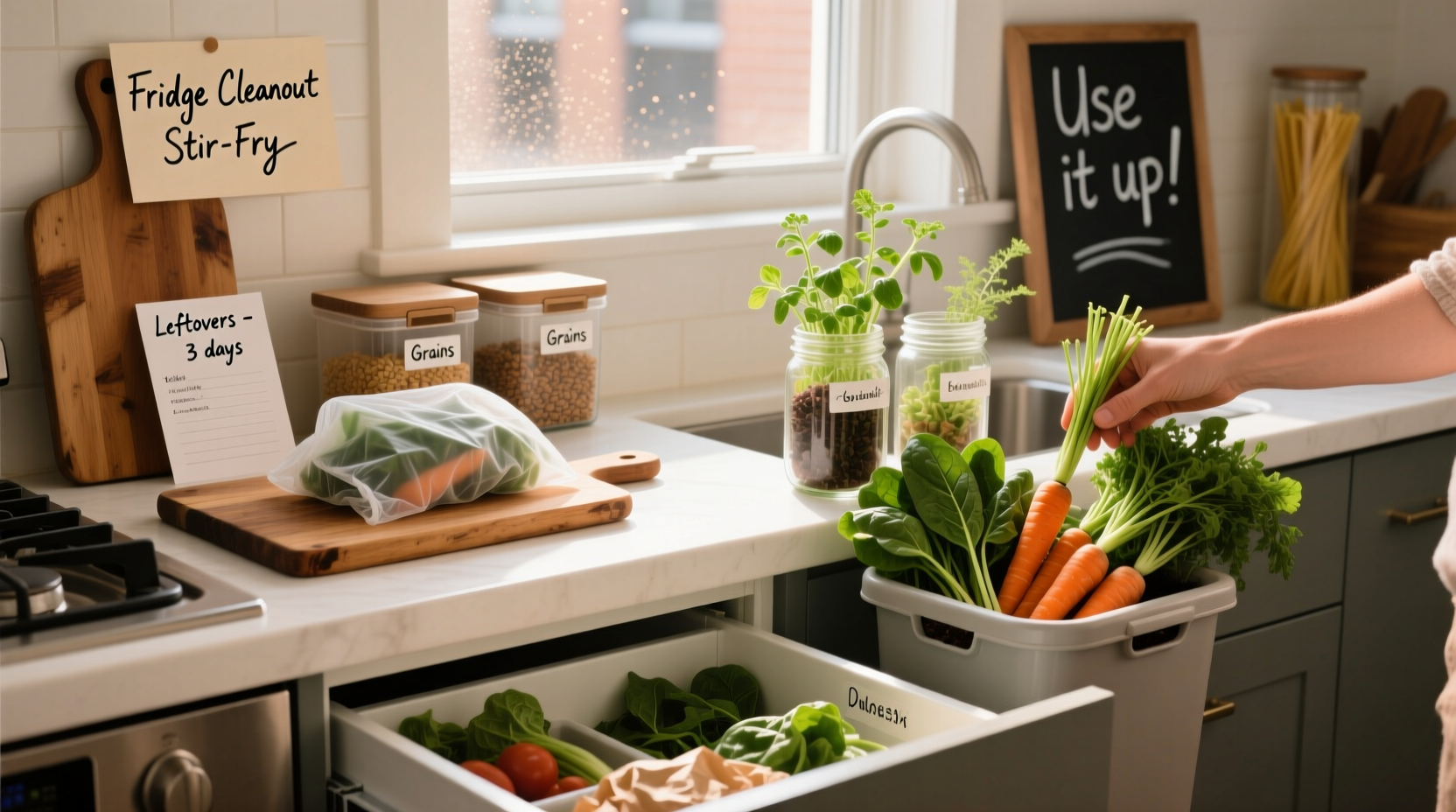Reducing food waste saves money, conserves resources, and lowers your environmental impact. Implement these evidence-based strategies: plan meals, store properly, use leftovers creatively, and compost scraps. The average household can save $1,500 annually while preventing 240 pounds of food waste per person each year.
Food waste isn't just an environmental issue—it's a personal financial burden and ethical concern. With 30-40% of the U.S. food supply ending up in landfills, households hold significant power to drive change. This guide delivers practical, science-backed methods that professional chefs and sustainability experts use daily to minimize waste without compromising convenience or quality.
Strategic Meal Planning That Actually Works
Effective meal planning forms the foundation of food waste reduction. Unlike generic advice, these techniques come from professional kitchen management principles:
- Inventory-first planning: Before shopping, conduct a "kitchen audit"—check your pantry, fridge, and freezer. Professional chefs use this method to build menus around existing ingredients.
- Flexible recipe frameworks: Instead of rigid meal plans, create adaptable templates. For example: "grain + protein + vegetable + sauce" allows ingredient substitution based on what's nearing expiration.
- Batch cooking with variation: Cook large quantities of base ingredients (grains, proteins, roasted vegetables), then transform them into different meals throughout the week.
According to USDA research, households that implement structured meal planning reduce food waste by 15-25% within the first month. The key is building flexibility into your system—rigid plans often lead to discarded ingredients when schedules change.
Advanced Food Storage Techniques
Proper storage extends food freshness significantly. These methods go beyond basic "use airtight containers" advice:
| Common Food | Standard Storage | Professional Technique | Extended Freshness |
|---|---|---|---|
| Leafy greens | Plastic bag in crisper | Washed, spun dry, stored in container with paper towel | 2-3 weeks vs 5-7 days |
| Herbs | Bundled in fridge | Trim stems, store upright in water like flowers | 2-3 weeks vs 3-5 days |
| Berries | Original container | Vinegar wash, complete dry, store in single layer | 7-10 days vs 3-4 days |
| Root vegetables | Plastic bag | Remove greens, store in breathable container with damp sand | 2-3 months vs 2-3 weeks |
The evolution of food preservation has given us sophisticated understanding of ethylene gas management. Modern storage techniques focus on separating ethylene producers (apples, bananas, avocados) from ethylene-sensitive items (leafy greens, berries, carrots). This simple separation can double the shelf life of sensitive produce.

Creative Leftover Transformation System
Transforming leftovers requires understanding flavor layering principles chefs use to refresh dishes:
- Texture reset: Revive stale bread with a quick oven toast; revive wilted vegetables with a quick sauté
- Flavor bridge: Add one new component to change a dish's identity (e.g., add curry paste to leftover roast chicken to create a curry)
- Component reuse: Save vegetable scraps for stock; use stale bread for croutons or breadcrumbs
A 2023 study from the Natural Resources Defense Council found that households implementing systematic leftover transformation reduced food waste by 31% compared to those using ad-hoc approaches. The critical factor was having a "leftover ladder"—a predetermined plan for how items would progress through multiple meals.
Strategic Food Preservation Methods
When you can't use food immediately, preservation becomes essential. These techniques offer different benefits depending on your situation:
- Freezing: Best for cooked grains, sauces, and blanched vegetables. Portion before freezing for single-use quantities.
- Pickling: Ideal for vegetables approaching spoilage. Quick refrigerator pickles require no canning equipment.
- Dehydrating: Perfect for fruits, herbs, and vegetable scraps destined for stock.
- Fermenting: Transforms surplus vegetables into probiotic-rich foods with extended shelf life.
Context matters when choosing preservation methods. Freezing works well for those with space, while urban dwellers with limited freezer space might prioritize pickling or dehydrating. The EPA reports that proper home food preservation can extend the usable life of surplus food by 6-12 months, depending on the method.
Smart Composting Solutions for Every Household
Even with excellent planning, some food scraps are inevitable. Composting transforms waste into valuable resources:
- Indoor options: Bokashi bins work in small spaces and handle all food waste, including meat and dairy.
- Outdoor systems: Tumbling composters accelerate the process and deter pests.
- Community solutions: Many cities now offer curbside compost pickup or community drop-off points.
According to the Environmental Protection Agency, food scraps in landfills generate methane, a greenhouse gas 28-36 times more potent than CO2. Home composting eliminates this impact while creating nutrient-rich soil. For apartment dwellers without outdoor space, vermicomposting (worm composting) in compact bins makes composting accessible to nearly everyone.
Community Food Sharing Networks
When you have surplus food beyond personal capacity to use, community networks provide valuable outlets:
- Food sharing apps: Platforms like Olio connect neighbors to share surplus food
- Community fridges: Public refrigerators where people can leave or take food
- Gleaning programs: Volunteer to harvest surplus crops from farms for food banks
These systems work best when integrated into regular routines. Setting a reminder to check for surplus food every Thursday evening, for example, creates consistency. Research from ReFED shows that households participating in food sharing networks reduce overall food waste by an additional 12% beyond personal reduction efforts.
Measuring Your Progress and Adjusting
Sustainable change requires tracking and refinement:
- Waste audit: For one week, track everything you discard—type, quantity, and reason
- Pattern identification: Look for recurring waste patterns (e.g., always discarding half a cucumber)
- Targeted adjustment: Address one pattern at a time with specific solutions
- Monthly review: Assess progress and set new goals
This systematic approach, used by professional kitchens to minimize costs, typically yields 20-30% waste reduction in the first three months. The key is focusing on specific, measurable changes rather than vague intentions.
What's the single most effective food waste reduction strategy for beginners?
Conducting a weekly "use-it-up" meal using ingredients that are nearing expiration proves most effective for beginners. This simple practice targets the most common waste point—food forgotten in the fridge—and creates immediate visible results. Studies show this single strategy reduces household food waste by 15-20% when consistently implemented.
How can I tell if food is still safe to eat?
Rely on sensory evaluation rather than arbitrary dates. Smell, texture, and visual inspection provide more accurate safety indicators than "best by" dates, which typically indicate peak quality rather than safety. The USDA FoodKeeper app provides science-based storage times and safety guidelines for hundreds of food items.
Does reducing food waste really save significant money?
Yes, substantially. The average American household wastes $1,500-$2,200 worth of food annually. Implementing basic food waste reduction strategies typically saves households 15-25% on grocery bills within the first six months, with more dedicated practitioners saving up to 40%.
What food scraps should never be composted at home?
Avoid composting meat, dairy, oily foods, and pet waste in standard backyard compost systems as they can attract pests and create odors. These materials require specialized hot composting systems. The EPA recommends using municipal composting programs for these items where available, or Bokashi fermentation which can safely process all food waste types.











 浙公网安备
33010002000092号
浙公网安备
33010002000092号 浙B2-20120091-4
浙B2-20120091-4